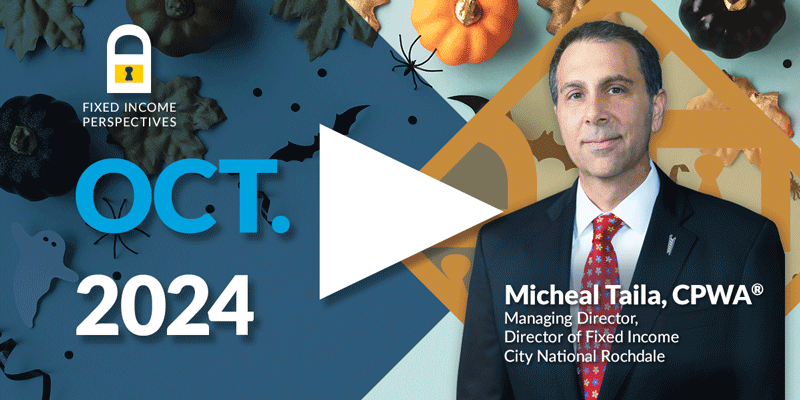

June 12, 2023
Is the economy slowing enough for the Fed?
The Federal Reserve (Fed) wants the pace of economic growth to slow to help bring inflation under control. Economic growth has been slowing since early 2021, back when there was a great deal of stimulus (fiscal and monetary) in the economy to battle the economic impact of the pandemic. Since then, much of the emergency fiscal stimulus has stopped. In addition, the Fed has taken away the monetary stimulus by raising the federal funds rate by 500 basis points and allowing bonds to mature out of its portfolio (quantitative tightening). More recently, banks have become more stringent in their access to credit.
The economy has responded by slowing its pace of growth; monthly job gains have decelerated, along with consumer spending, and households have spent down more than half of their excess savings from the pandemic. But the economy has not retrenched enough to forcibly bring down inflation to a level the Fed desires. Most of the improvement in inflation has come from supply chain issues being resolved, not a slower level of demand.
The Fed is focused on the service part of the economy that does not include housing (yes, housing is considered a service for inflation calculations). It is part of the economy where the cost of labor significantly impacts the cost of the service (anything from dry cleaners to restaurants). To measure inflation in that part of the economy, the Fed looks at service inflation without shelter, dubbed super-core. It has remained resiliently high, well above the Fed’s inflation target of 2.0% (see chart). The Fed plans to keep interest rates higher for longer to reduce the demand for these services, which should lead to lower wage gains and smaller price increases.
CPI: Service less shelter (super-core)
% change, seasonally adjusted

Sources: Bureau of Labor Statistics, Bloomberg, April 2023
Please note: Information is subject to change and is not a guarantee of future results.
Is the debt ceiling crisis behind us?
After months of political impasse and mounting financial market anxiety, lawmakers reached an eleventh-hour deal to raise the U.S. debt ceiling. Not only was a catastrophic default avoided, but the agreement surprisingly came with overwhelming bipartisan support. Amid one of the most challenging political environments in years, the level of compromise witnessed during negotiations bodes well for upcoming 2024 budget appropriations and chances of avoiding a government shutdown.
The agreement, outlined in the Fiscal Responsibility Act of 2023 (FRA), suspends the debt ceiling for two years, caps discretionary spending for 2024-2025, and makes several narrower policy changes. While the Congressional Budget Office (CBO) expects the FRA to save a projected $1.5 trillion over the next decade, it will do little to alter the current debt trajectory of the U.S. government which is expected to reach $45.2 trillion in 2033. Importantly, the bill doesn’t touch major entitlement programs such as Medicare and Social Security, which comprise more than two-thirds of overall federal spending.
The economic impact is also expected to be relatively small, with the reduction in federal spending under the bill projected to be in the 0.1-0.2% range of gross domestic product (GDP) over 2024 and 2025. The greatest impact on the economy will likely come from the end of the moratorium on student debt repayment, which represents a near-term risk to consumption.
For markets, history suggests the removal of uncertainty surrounding the debt ceiling is positive for equities. In the past, U.S. stocks have turned volatile as the government has approached the debt ceiling and then have risen on average in the months following an agreement to raise the debt limit.
However, our advice to investors has not changed. We continue to expect the path forward for equity markets in the coming months to be more challenging as recessionary pressures build, especially if Fed officials keep monetary conditions tight.
Fiscal Responsibility Act: CBO official scoring
Annual savings, $ billion

Source: Congressional Budget Office, May 2023
Please note: Information is subject to change and is not a guarantee of future results.
Has the housing market bottomed yet?
The housing sector (residential investment) has been a drag on the economy for the past year and a half. It accounts for just 2.9% of GDP, below the long-term average of 4.3%. One of the main reasons for the weakness has been the rapid upward movement in mortgage rates over the past year, which reduced demand. But now that mortgage rates have stabilized and supply is very limited, it appears that housing may be finally hitting bottom. In each of the past two months, home prices have increased, following seven consecutive months of declines.
The most significant issue impacting the housing market is the lack of homes for sale. Nine out of 10 homes that are sold are existing homes. The run-up in mortgage rates has effectively locked millions of homeowners who have a mortgage rate below 5.0% into their homes. There is very little interest in getting a replacement home with substantially higher financing costs. The lack of sellers is causing the inventory of existing homes for sale to be near their long-term lows (see chart). This has pushed up the demand for new homes. The increased buying helped bail out developers with growing inventory when mortgage rates rose last year. The new demand is increasing the number of building permits and housing starts.
Inventory of homes for sale
months supply, not seasonally adjusted

Source: U.S. Census Bureau, National Association of Realtors, April 2023
Please note: Information is subject to change and is not a guarantee of future results.
Have municipal bond investment opportunities emerged amid recent financial market volatility?
Complex debt ceiling negotiations and concerns over monetary policy and the inflation trajectory resulted in Treasury market dislocation during May, with yields rising across the curve. The municipal market moved in tandem with a shift in benchmark AAA bonds, particularly within five years, improving buying opportunities for investors as yield ratios relative to comparable Treasury securities bounced off their yearly lows. For example, five-year municipal yield ratios exceeded 72% at month-end May, the highest since Fall 2022. Previously overbought pockets of the market now offer a more compelling entry point to lock in portfolio value.
In the nearterm, Fed politics will likely weigh on the market, leading to further fluctuations in fixed-income market rates. Still, technical support within the municipal market has the potential to anchor prices somewhat as redemption-heavy summer months (e.g., Bloomberg reports more than $100 billion in maturities/cash flows over the next three months) will likely offset negative municipal bond mutual fund flows that haven't achieved consistent stability, while supply is shaping up to remain below the historical 10-year average (based on Year-to-Date (YTD) issuance). That said, the demand/supply imbalance could help reverse the weakened performance of municipal bonds in April and May.
The yield-to-worst of the investment grade (IG) and high yield (HYM) municipal bond Bloomberg indices ended 2022 at their highest levels in several years and continue to provide attractive tax-efficient income for investors as current index yields are roughly inline with peak levels YTD. Attractively priced coupons, or "carry," can enhance forward-looking returns, as the compounding of reinvestment income has historically constituted a larger proportionate share of total return, per Bloomberg data. With credit fundamentals mostly intact across many sectors, carefully selected municipal bonds offer added portfolio diversification, capital preservation and tax optimization for investors.
Index yields sustain 2022 highs into 2023

Source: Bloomberg, as of June 1, 2023
Please note: Information is subject to change and is not a guarantee of future results.
IMPORTANT INFORMATION
The information presented does not involve the rendering of personalized investment, financial, legal or tax advice. This presentation is not an offer to buy or sell, or a solicitation of any offer to buy or sell, any of the securities mentioned herein.
Readers are cautioned that such forward-looking statements are not a guarantee of future results and involve risks and uncertainties, and actual results may differ materially from those statements.
Certain statements contained herein may constitute projections, forecasts and other forward-looking statements, which do not reflect actual results and are based primarily upon a hypothetical set of assumptions applied to certain historical financial information. Certain information has been provided by third-party sources, and although believed to be reliable, it has not been independently verified, and its accuracy or completeness cannot be guaranteed.
Any opinions, projections, forecasts and forward-looking statements presented herein are valid as of the date of this document and are subject to change.
Investing involves risk, including the loss of principal.
This material is available to advisory and subadvised clients, as well as financial professionals working with City National Rochdale, a registered investment adviser and a wholly owned subsidiary of City National Bank. City National Bank provides investment management services through its subadvisory relationship with City National Rochdale.
Any opinions, analysis and expectations mentioned herein are as of June 12, 2023, unless otherwise noted or sourced.
Stay Informed.
Get our Insights delivered straight to your inbox.
Put our insights to work for you.
If you have a client with more than $1 million in investable assets and want to find out about the benefits of our intelligently personalized portfolio management, speak with an investment consultant near you today.
If you’re a high-net-worth client who's interested in adding an experienced investment manager to your financial team, learn more about working with us here


